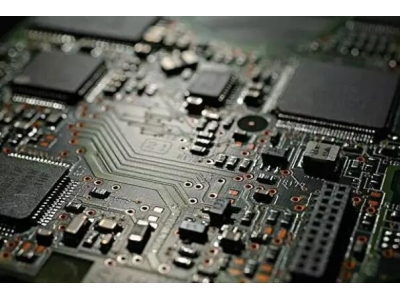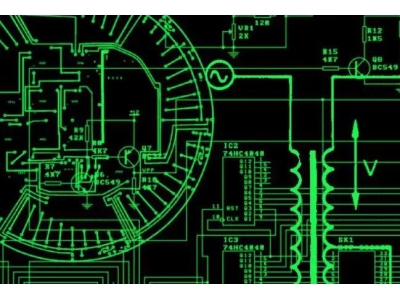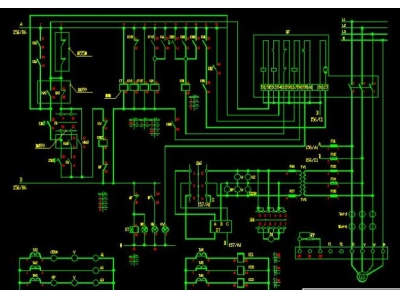华为研制出新芯片代表什么?
一、华为研制出新芯片代表什么?
华为研制出新芯片代表着其在半导体领域的技术实力和创新能力的提升。新芯片的问世将进一步巩固华为在全球通信设备和智能手机市场的竞争地位,提升产品性能和用户体验。
此外,新芯片的研制也意味着华为在自主可控的技术发展道路上取得了重要突破,减少了对外部供应链的依赖,提高了公司的安全性和可持续发展能力。华为的新芯片代表着中国科技企业在全球舞台上的崛起,对于中国整体科技实力的提升具有重要意义。
二、华为光子芯片什么时候研制?
早在2019年,任正非就曾提到光子芯片,并表示这种芯片研发成功后就可以绕过ASML光刻机,打破美国在关键技术领域卡脖子的局面。而早在2012年,华为就开始布局光子芯片,收购光子集成公司CIP,为日后的研究做准备。去年2月,华为研究出800G超高速可调光子模式,实现了新的突破。
三、数字电路芯片和模拟电路芯片有什么区别?
数字电路芯片主要是门电路,比如与非门,或非门,JK触发电路。
模似电路芯片以运算放大。如把一个微小的信通过放大电路,如OP一07,单运萛放大电路。四运萛放大电路。
模似电路芯片是使用三极管的放大区工作。数字电路芯片是利用三极管的饱和区,和死区。的导道与关断。
四、电路维修属于什么专业
电路维修是现代社会中一个非常重要的专业领域。随着科技的发展,电子设备已经渗透到我们日常生活的方方面面,从家庭用品到商业设备,几乎无处不在。因此,电路维修的需求也随之增加。
那么,电路维修究竟属于什么专业呢?它涉及的知识和技能有哪些?本文将为您解答这些问题。
电路维修是什么
电路维修是一门涉及电子电路原理、电路设计和故障排除的专业。它主要关注电子设备中的电路部分,包括各种电子元件的安装、连接和维护。
对于电路维修人员来说,他们需要具备一定的电子知识和技术能力,以便能够正确诊断和修复故障。他们需要了解不同类型的电路,熟悉各种电子元件的特性和工作原理,熟练掌握测量和测试电路的方法。
电路维修的分类
电路维修可以根据不同的领域和设备进行分类。下面是一些常见的电路维修分类:
- 家庭电路维修:维修家用电器、照明设备等家庭电路问题。
- 工业电路维修:维修工厂设备、生产线电路等工业设备问题。
- 通信电路维修:维修电话、无线网络等通信设备问题。
- 汽车电路维修:维修汽车电路、车载电子设备等汽车相关问题。
根据具体的维修对象,电路维修人员需要掌握不同的知识和技能。不同的电子设备有不同的工作原理和电路设计,因此对于电路维修人员来说,持续学习和研究是十分重要的。
电路维修的技能要求
想要成为一名专业的电路维修人员,以下是一些必备的技能要求:
- 电子知识:了解电子元件的基本原理、特性和功能。
- 电路分析:能够分析电路的结构和工作原理。
- 故障诊断:能够准确诊断电路故障的位置和原因。
- 仪器使用:熟练使用各种电路测试仪器,如万用表、示波器等。
- 焊接技术:具备电子元件的安装和焊接技术。
- 解决问题的能力:能够独立思考和解决电路故障。
同时,电路维修人员还需要具备良好的沟通能力和团队合作精神。在维修过程中,他们可能需要与客户沟通故障情况,或者与其他维修人员共同合作解决复杂的问题。
电路维修的未来
随着科技的不断进步和电子设备的不断更新,电路维修的需求将会持续增长。尤其是随着物联网和人工智能技术的快速发展,各种智能设备的使用将变得越来越普遍。
在未来,电路维修人员需要不断学习和更新知识,以适应新技术和新设备的要求。他们可能需要掌握更多的电子知识,学习新的电路设计和故障排除方法。
总之,电路维修是一个充满挑战和机会的专业领域。对于那些对电子技术感兴趣并具备一定技术能力的人来说,电路维修是一个值得考虑的职业选择。
五、差分放大电路能够抑制什么?
差分放大电路对共模输入信号有很强的抑制能力,对差模信号却没有多大的影响,因此差分放大电路一般做集成运算的输入级和中间级,可以抑制由外界条件的变化带给电路的影响,如温度噪声等。
你可以去找一些集成电路看一下,第一级基本上都是差分放大。所有放大电路都有一个明显的特点,就是它们只是放大某一个电势点,另一个电势点是默认接地的。
而有时我们需要放大电压的两端电势没有一个接地的,那么这个时候,上述所有放大电路将不再适用。我文章一开头提到的采样步进电机电流,就是这种情况,这个时候就是差分放大电路登场的时间了。
六、降压电路用什么芯片?
降压电路常用的芯片有很多种,根据不同的应用场景和要求可以选择不同的芯片。以下是一些常用的降压电路芯片:
1. 线性稳压器芯片:比较常见的线性稳压芯片有LM317、LM7805等,它们可以将输入电压稳定输出为固定的较低电压。
2. 切换稳压器芯片:切换稳压器芯片可以在输入电压高于输出电压时实现高效率的降压。常见的切换稳压器芯片有LM2596、LM2576等。
3. DC-DC转换器芯片:DC-DC转换器芯片可以将输入电压通过功率转换的方式降低输出电压。常见的DC-DC转换器芯片有LM2596、MC34063等。
4. 控制器芯片:控制器芯片通常用于设计复杂的降压电路,通过外接MOS管等器件来实现降压功能,例如LM5117、LM3524等。
需要根据具体的输入电压范围、输出电压需求、负载要求、效率要求等因素来选择适合的芯片。同时,还需注意芯片的工作频率、稳定性、温度范围等参数,以满足设计要求。最好参考相关芯片的数据手册来选取适合的降压芯片。
七、什么是集成电路芯片?
集成电路芯片是包括一硅基板、至少一电路、一固定封环、一接地环及至少一防护环的电子元件。
结构电路形成于硅基板上,电路具有至少一输出/输入垫。固定封环形成于硅基板上,并围绕电路及输出/输入垫。接地环形成于硅基板及输出/输入垫之间,并与固定封环电连接。
八、化妆品研制要学什么专业?
化妆品研制需要学习化学、化妆品工程、生物技术、药学、食品科学等相关专业知识。其中,化学作为基础学科,涵盖了化妆品研制的许多基本知识和技术,包括化学反应、化学分析、原料与成分等等。
化妆品工程则更加偏重于实践性技能,包括制剂工艺、生产流程、设备设计等等。
生物技术则关注于微生物、细胞等生物体系的应用,为化妆品的功能性研究提供了重要的技术支持。
药学则更关注于药物和化妆品之间的关系与交叉,而食品科学则为化妆品研制提供了更加广阔的素材库和创新空间。综上所述,化妆品研制需要学习多个领域的专业知识,以构建一个全面的知识体系。
九、研制护肤品的是什么专业?
研制护肤品的专业包括化学、药学、生物工程、化妆品科学等。 因为护肤品中的成分需要经过化学反应才能制成,药学可以提供相关的知识理论基础,生物工程可以研究护肤品的生物活性成分,而化妆品科学则是专门研究化妆品、护肤品等美容消费品的开发、生产、质量控制、市场营销等方面的知识。 此外,还可以包括食品科学、材料工程等学科。
十、印刷电路板是芯片吗为什么
印刷电路板(PCB)是现代电子设备的核心组成部分之一。虽然它与芯片(IC)不同,但在电子产品中起着至关重要的作用。因此,了解印刷电路板与芯片的不同以及它们之间的关系对于电子行业的从业人员至关重要。
印刷电路板
印刷电路板是一种由绝缘材料制成的平板,上面覆盖有导电迹线和连接电子元件的孔。它是电子组件之间的连接者,使得电流能够在电子设备中流动。印刷电路板广泛应用于各种电子设备,如手机、电视、计算机等。
印刷电路板的制造涉及多个工艺步骤。首先,设计师使用电子设计自动化(EDA)软件来创建电路板的原理图和布局。接下来,原理图转化为布局图,并进行层级分割,以便确定每一层的迹线和电子元件的位置。然后,使用光刻技术将图案转移到电路板的表面。接着,通过化学蚀刻去除不需要的金属,形成迹线。最后,通过喷锡、焊接和穿孔等工艺步骤完成电路板的制造。
印刷电路板在电子设备中起着至关重要的作用。它不仅提供了电子元件之间的连接,还提供了机械支持和保护。由于印刷电路板的广泛应用,需要不同类型和规格的电路板来满足不同的需求。
芯片
与印刷电路板相比,芯片是电子设备中更小、更复杂的组件。芯片通常是由硅材料制成,上面集成了多个电子元件和晶体管。它被用于执行计算、存储数据和控制电子设备的各种功能。
芯片的制造工艺非常复杂。它包括多个步骤,如晶圆制备、沉积材料、光刻、蚀刻、清洗等。每个步骤都需要高精度的设备和精细的控制,以确保芯片的性能和可靠性。
芯片是现代电子设备的核心。它们在计算机、手机、电视、汽车等各个领域发挥着重要作用。随着芯片制造技术的不断发展,芯片的集成度和性能不断提高,同时尺寸也越来越小。
印刷电路板与芯片的关系
尽管印刷电路板和芯片在电子设备中具有不同的角色和功能,但它们紧密相连并相互依赖。
首先,印刷电路板为芯片提供了机械支持和连接。在许多情况下,芯片需要通过焊接或插入的方式与印刷电路板连接在一起。印刷电路板上的导电迹线将信号传输到芯片,并将芯片产生的信号传输到其他电子元件。
其次,印刷电路板提供了电源和地线的连接,为芯片提供所需的电力。芯片需要稳定而可靠的电源供应以正常工作,而印刷电路板则提供了电源分配网络,确保电源能够传输到芯片。
另外,印刷电路板还提供了降低电磁干扰的功能。通过地线和屏蔽层的设计,印刷电路板可以减少电磁波对芯片的干扰,提高设备的抗干扰性能。
为什么印刷电路板不是芯片?
尽管印刷电路板与芯片紧密相关,但它们是不同的组件,具有不同的功能和特性。
首先,印刷电路板主要用于连接电子元件,并提供电源和信号传输等功能。它是一个电气连接器和支持结构,而不是用于处理和执行计算任务的器件。
相比之下,芯片具有更复杂的结构和更高的集成度。它集成了大量的电子元件,并具有处理、存储和控制的功能。芯片能够执行复杂的计算任务,并且在体积更小的尺寸下提供更高的性能。
此外,印刷电路板的制造工艺与芯片的制造工艺也有很大的不同。印刷电路板的制造相对简单,主要依赖于光刻和蚀刻等工艺。而芯片的制造需要更复杂的步骤和高精度的设备。
尽管印刷电路板不是芯片,但二者之间的关系不可或缺。印刷电路板为芯片提供了连接和支持,而芯片为印刷电路板提供了逻辑和计算能力。它们彼此合作,共同组成了现代电子设备中不可或缺的组成部分。
(Translation) htmlPrinted Circuit Boards (PCBs) are one of the core components of modern electronic devices. Although they are different from Integrated Circuits (ICs), they play a crucial role in electronic products. Therefore, it is essential for professionals in the electronics industry to understand the differences between PCBs and ICs and their relationship.
Printed Circuit Boards
A printed circuit board is a flat board made of insulating material, covered with conductive traces and holes for connecting electronic components. It serves as a connector between electronic components, allowing the flow of current in electronic devices. Printed circuit boards are widely used in various electronic devices such as smartphones, televisions, computers, and more.
The manufacturing process of printed circuit boards involves multiple steps. First, designers use Electronic Design Automation (EDA) software to create the schematic and layout of the circuit board. The schematic is then turned into a layout and hierarchically divided to determine the traces and positions of electronic components on each layer. Next, the pattern is transferred to the surface of the circuit board using photolithography. Then, unwanted metal is etched away through chemical etching to form the traces. Finally, processes such as tin spraying, soldering, and drilling are used to complete the manufacturing of the circuit board.
Printed circuit boards play a crucial role in electronic devices. They not only provide connections between electronic components but also offer mechanical support and protection. Due to the widespread use of printed circuit boards, different types and specifications are required to meet various needs.
Integrated Circuits
Compared to printed circuit boards, integrated circuits are smaller and more complex components in electronic devices. Integrated circuits are typically made of silicon material and contain multiple electronic components and transistors. They are used to perform calculations, store data, and control various functions in electronic devices.
The manufacturing process of integrated circuits is highly complex. It involves multiple steps such as wafer preparation, material deposition, photolithography, etching, cleaning, and more. Each step requires high-precision equipment and precise control to ensure the performance and reliability of the integrated circuits.
Integrated circuits are the heart of modern electronic devices. They play a vital role in various fields such as computers, smartphones, televisions, automobiles, and more. As the manufacturing technology advances, integrated circuits continue to improve in terms of integration, performance, and smaller size.
The Relationship between Printed Circuit Boards and Integrated Circuits
Although printed circuit boards and integrated circuits have different roles and functions in electronic devices, they are closely connected and interdependent.
Firstly, printed circuit boards provide mechanical support and connections for integrated circuits. In many cases, integrated circuits need to be connected to the printed circuit boards through soldering or insertion. The conductive traces on the printed circuit boards transmit signals to the integrated circuits and transmit signals generated by the integrated circuits to other electronic components.
Secondly, printed circuit boards provide connections for power supply and ground lines to the integrated circuits. Integrated circuits require stable and reliable power supply to function properly, and printed circuit boards provide the power distribution network to ensure power transmission to the integrated circuits.
Additionally, printed circuit boards also have the function of reducing electromagnetic interference. Through the design of ground lines and shielding layers, printed circuit boards can reduce electromagnetic waves' interference on integrated circuits, improving the devices' anti-interference performance.
Why Printed Circuit Boards are Not Integrated Circuits?
Although printed circuit boards are closely related to integrated circuits, they are different components with distinct functions and characteristics.
Firstly, printed circuit boards are primarily used for connecting electronic components and providing functions such as power supply and signal transmission. They serve as electrical connectors and support structures rather than devices designed for processing and executing computational tasks.
In contrast, integrated circuits have more complex structures and higher integration. They integrate numerous electronic components and possess functions for processing, storing, and controlling. Integrated circuits can perform complex computational tasks and provide higher performance in smaller sizes.
Furthermore, the manufacturing processes of printed circuit boards and integrated circuits are significantly different. The manufacturing of printed circuit boards is relatively straightforward, relying on processes like photolithography and etching. On the other hand, the manufacturing of integrated circuits involves more complex steps and requires high-precision equipment.
Although printed circuit boards are not integrated circuits, their relationship is indispensable. Printed circuit boards provide connections and support for integrated circuits, while integrated circuits provide logic and computational capabilities for printed circuit boards. They work together to form an essential component of modern electronic devices.





